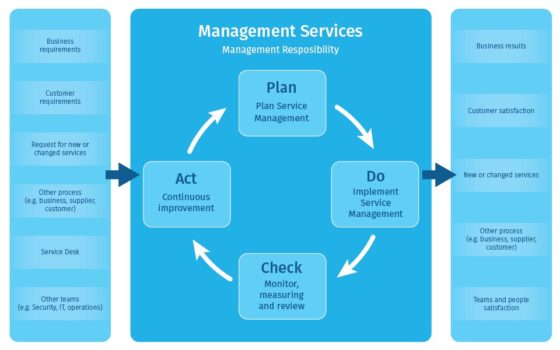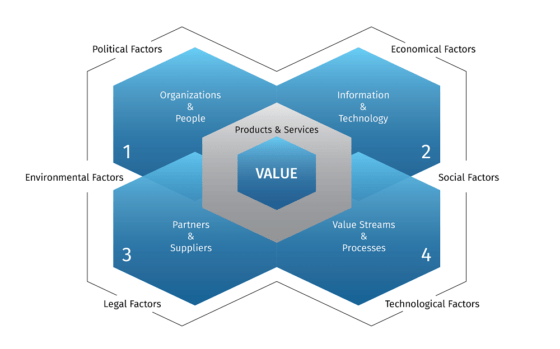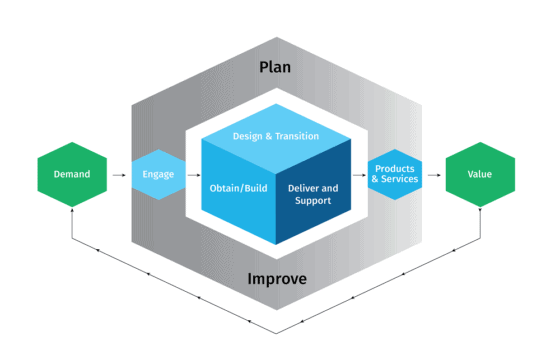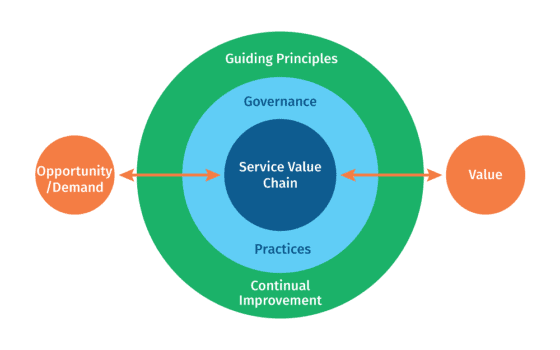
This article originally appeared on Forbes.com; it has been modified for this space.
CIOs have a new mandate from CEOs: accelerate innovation and growth as a business-driven thought leader rather than simply a caretaker of technology. This paradigm shift requires changes in how CIOs and their teams work, and in how they deliver on the technology needs of the business to enable organizational goals.
IT Service Management (ITSM) — a set of policies, processes, and procedures originally defined as how companies manage the implementation, improvement, and support of customer-oriented IT services — can facilitate this new mandate. Similar to the CIO’s new role, IT Service Management’s role has more recently been redefined as how enterprises deliver valuable services to customers.1
According to CIO.com: “Unlike other IT management practices that focus on hardware, network, or systems, ITSM aims to consistently improve IT customer service in alignment with business goals.” Businesses using ITSM are service-focused “…rather than a department that manages technology.”2
Best Practices Frameworks like ITIL Facilitate IT Success
There are many approaches to IT Service Management and many best-practices frameworks for facilitating its success. Some familiar frameworks include Agile, DevOps, Lean, and ITIL.
ITIL (originally an acronym for IT Infrastructure Library, but now referred to simply as ITIL) is one of the most widely-used IT efficiency frameworks around the world and most often associated with ITSM.
ITIL was developed in the 1980s by the United Kingdom government to address the inefficiency of both private sector organizations and government agencies establishing their own IT management practices.3 In creating ITIL, the UK government was acknowledging — and promoting — the benefits of standardized best practices that are available to everyone engaged in IT Service Management.
While not prescriptive, ITIL guidelines gained in popularity and influence over the years and were streamlined, thereby becoming more accessible and affordable. In 2005 ITIL practices were incorporated into ISO 20000, the international standard for service management best practices; each is complementary to the other.
ITIL 4 and the Co-Creation of Value
The best practices of ITIL are consistently being improved to maintain relevance with business and exist amongst popular frameworks (e.g. Agile, Lean, DevOps). The latest release of the ITIL framework, ITIL 4, was launched in February 2019 and is in my opinion the best ITIL version yet. What I like most is how the framework has adopted some common ISO principles, specifically around how requirements are collected and how deliverables are measured.
From the ISO standard:
ISO/IEC 20000 Plan-Do-Check-Act in IT Service Management
© ISO

ITIL 4 accomplishes this through what is considered by some to be transformational: the co-creation of value with the business, rather than for the business.4 ITIL 4 also keenly recognizes companies’ co-creation of value with consumers through collaboration and feedback.5
To understand this better, let’s look at the ITIL framework. ITIL 4 consists of three key components: the four dimensions model, the service value system (SVS), and the service value chain.
In the four dimensions model, ITIL 4 defines those critical dimensions that should be considered to ensure a holistic approach to service management:
- Organizations and people
- Information and technology
- Partners and suppliers
- Value streams and processes
These dimensions are applicable to the service value system in general and to specific services.
ITIL Four Dimensions of Service Management
© AXELOS

The ITIL 4 service value system (SVS) represents “how all the components and activities of an organization work together to facilitate value creation.” The ITIL 4 SVS includes several elements:
- Guiding principles
- Governance
- Service value chain
- Practices
- Continual improvement
ITIL Service Value System
© AXELOS

And lastly, at the center of the ITIL 4 framework is the service value chain, which consists of six activities:
- Plan
- Engage
- Design and transition
- Obtain/build
- Deliver and support
- Improve
These activities work together to take the incoming demand and create corresponding value in delivering the products and services required by the organization.
ITIL Service Value Chain
© AXELOS

Examples of ITIL in Value Co-Creation
At Rimini Street, we help co-create value every day through independent third-party enterprise software support. Our services are integrated within customer IT departments, representing best practices for building co-created value — both between IT and the business, and between the business and its customers.
We use the value creation model to deliver services to our clients by first measuring the demand, then engaging and building the services with our clients. We constantly measure feedback to ensure that we are providing value, and to implement improvements if necessary. As a result, we have been able to maintain an overall 4.9/5.0 customer satisfaction rating with an average service response time of 30 minutes.
We also use the value creation model to implement service innovations and improvements based directly upon that customer feedback. With a recent new service launch that involved support tickets, there existed — due to a client’s great volume of tickets — a misalignment in efficiency between our ticket tracking/management system and the client’s own internal, preferred logging/tracking system.
Client feedback alerted us to this opportunity for improvement. To resolve the issue, we followed the ITIL service value system and engaged with our support delivery organization and that of our client to understand the demands, then design, build, and deliver a solution.
Our value co-creation exercise resulted in a streamlined solution using electronic bonding technology that integrates and connects software between two unique enterprises and their systems. Our clients can now submit and track tickets within their own system, and our engineers can access and resolve them in our system. This has removed inefficiency, simplified workflow, and increased customer satisfaction.
The Future of Value Co-Creation
Thought-leading CIOs accepting the challenge to drive innovation and growth would do well to consider ITIL and other available support framework options in co-creating value with the business and with consumers. Doing so can strategically strengthen competitive advantage and accelerate achievement of organizational goals.
1 BMC Software, Inc., “ITSM vs ITIL: What’s the Difference?,” July 2, 2019. https://www.bmc.com/blogs/itsm-or-itil-that-isnt-the-question/
2 CIO, “What is ITSM? Managing IT to Serve Business Needs,” August 15, 2019. https://www.cio.com/article/3228122/what-is-itsm-managing-it-to-serve-business-needs.html
3 IT Governance, “The Evolution of ITIL: How the Framework has Reshaped IT Service Management,” October 28, 2019. https://www.itgovernance.eu/blog/en/the-evolution-of-itil-how-the-framework-has-reshaped-it-service-management
4 BMC Software, Inc., “ITIL 4® vs ITIL v3®: What’s The Difference? (And What’s All The Fuss About?),” December 30, 2019. https://www.bmc.com/blogs/itil-4-vs-itil-v3/
5 BMC Software, Inc., “Key Concepts of Service Management in ITIL 4,” April 18, 2019. https://www.bmc.com/blogs/itil-key-concepts-service-management/



